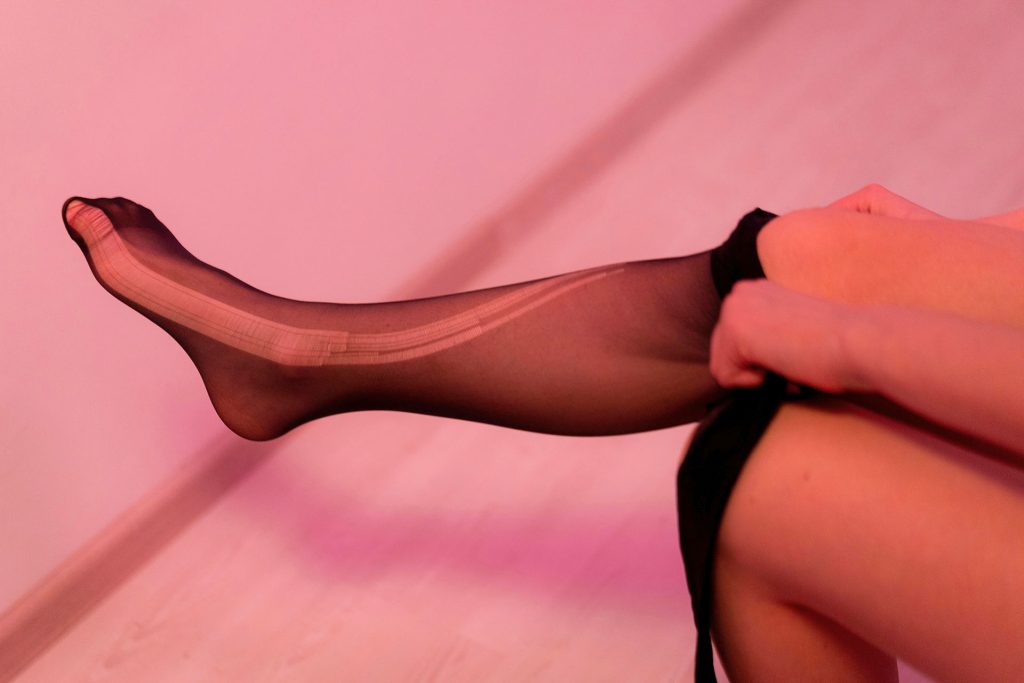Toward the end of the last century, a man with an amputated leg arrived at Ramachandran’s laboratory.
“My left leg is obviously gone, but I still sometimes feel excruciating pain, as if a million pinpoints were sticking into my leg,” he said.
Ramachandran, a neurologist and psychology professor, had long been familiar with this clinical phenomenon, known as “phantom limb pain.” Approximately one in 8,532 patients experiences phantom pain after having a limb removed.
But what happened next was subtle. The man discovered that he could experience sexual pleasure and even an orgasm by thinking about his lost leg.
While this may sound exotic, a groundbreaking study from the late 1950s proved that the two phenomena had a common biological basis.
It was the “Penfield homunculus,” a significant concept in the history of brain science.

Dr. Penfield discovered that every sensation in the body corresponds to a specific area of the brain. Even after losing a limb, the brain’s mapping to that limb is not completely cut off, which explains why “phantom limb pain” occurs.
Additionally, because the areas of the brain responsible for processing information from the feet and genitals are close together, people experience sexual pleasure when these mappings are misaligned or “accidentally rearranged.”
In Ghosts in the Brain: Exploring the Mysteries of the Human Mind (Harper, 1999), Ramachandran states, “Perhaps many of us so-called normal people have slight cross-misalignment of connections, which may explain why some people like to suck their toes.”

01
“How does ‘Foot fetishism’ develop?
Foot fetishism is a fetish involving a special interest in human feet. In a broader sense, it includes shoe fetishism and sock fetishism.
Although foot fetishism may have a biological basis, the complexity of the sexual psyche makes it difficult to explain why the brain reacts to certain stimuli the way it does.
The “foot charts” that some foot fetishists look at don’t contain any mainstream pornographic symbols.
Psychoanalyst Sigmund Freud believed that people “sexualize” feet because they resemble penises. In a 1927 article, he argued that, since a boy cannot find “his mother’s penis,” he projects his “castration anxiety” onto other parts of the female body. These include feet, shoes, and hair, to which he assigns eroticized meanings.
Moreover, in many cultures, such as ancient China, feet are considered private parts and are hidden, so there is a bit of sensual and erotic symbolism in foot nudity.
There are also some psychologists who hold alternative views.
- The most common view is that Foot fetishism is a learned response.
In other words, when we pair a neutral object (such as a shoe) with an arousing object (such as a nude photograph), the neutral object becomes a trigger for sexual arousal as well.
In 1966, Stanley Rachman’s Naked Photo and Boots Experiment confirmed this theory. Researchers showed volunteers a projected photo of a naked woman for 15 seconds and then a projected image of a pair of black knee-high boots for 30 seconds. Ultimately, just looking at the “black boots” projections caused the volunteers to become sexually aroused.
Dulcinea Pitagora, a psychiatrist in New York, said that many of her “patients” had their foot fetishism begin in childhood.
Sexual imprinting occurs when something visual or tactile is experienced (e.g., having encountered another person’s foot while experiencing initial sexual arousal).
Also, children are more likely to feel itchy feet than adults because little ones have lower soles and are more likely to see other people’s feet. Some of their experiences may leave a ‘sexual imprint’ on some children.
- Another theory is that innate personality determines who is more susceptible to Foot fetishism
According to Dr. Justin Lehmiller, a psychologist, people may be ‘born’ with a general tendency towards fetishism.
While personality can be affected by acquired and environmental influences, some studies have shown that certain personality traits are inheritable to some extent and that this group of people has the potential to be susceptible to foot fetishism.
However, whether foot fetishism will be expressed ultimately depends on external stimuli and psychosexual responses to life experiences.
- Desire to be dominated
“One of the psychological elements of Foot fetishism is ‘humiliation’, as some Foot fetishists enjoy the ‘feeling of submission’.
According to sex therapist Moushimi Ghose, the foot is often considered the “lowest part” of the body, making it a symbol of inferiority.
Some people are attracted to this idea because they like feeling “lower than their partner” and having their partner’s feet on their body — a form of “power play.” They feel submissive and dominated; devaluing themselves for others feels exciting.
Additionally, since our feet wear out and don’t receive proper care throughout the day, some foot fetishists find an erotic element in this. Ghose explains that in this way, foot fetishists feel that they are worshipping something seen as less important and derive satisfaction from it.

02
“How common is ‘Foot fetishism’?
Although ‘Foot fetishism’ may sound niche, a quick look at the literature in the field shows that fetishism is a sexual phenomenon that has been prevalent worldwide for a long time. Moreover, “Foot fetishism” is the most common type of fetishism.
For example, sociologist Gao Yanyi has detailed in his book “Foot Fetishism” the sexualization and worship of the “lotus foot” in Chinese history (of course, foot fetishism was also a means of oppressing women).
In recent years, Foot fetishism has also been seen in mainstream movies. Quentin, for example, is fond of pointing the camera at women’s bare feet.
On The Tyra Banks Show, Quentin was asked by the host ‘if he had Foot fetishism’. However, not knowing if it was because of the stigmatizing connotations of the word, Quentin simply replied that I was a ‘foot fetishist’.

Scorolli et al. (2007) conducted a statistical analysis of various types of fetishism. They found that, although fetishes involve a wide variety of objects and body parts, the most common types are body-related and involve objects a person uses (Stekel, 1922).
“In general, fetishism involves any sexualized object, concept, or situation,” says sex therapist Ashley Grinonneau Denton. “It tends to be psychologically ingrained in many people’s desires—if such an element is missing from sexuality, it is nearly impossible to feel sexual pleasure.”
Foot fetishists generally prefer the soles and toes (Scorolli et al., 2007), though some also like the arches and heels. Examples of how foot fetishism is expressed include kissing and sucking toes, watching foot videos, taking pictures of a partner’s feet, rubbing sweaty feet after a workout, stimulating the genitals with feet, and describing smelly feet to a partner.
Weinberg et al. (1994) studied bisexual/gay men with foot fetishism and found that nearly three-quarters were picky about the type of shoes that appealed to them (e.g., color, whether they had been worn before, and whether they were sneakers or loafers).
Approximately 60% of participants had specific preferences regarding the type of feet that appealed to them. Some were obsessed with bare feet, while others preferred feet with jewelry, tattoos, nail polish, high heels, or short or long socks.
In recent years, research by social psychologist Justin Lehmiller has shown that as many as one in seven people have had sexual fantasies about feet at least once in their lives, though fewer people actually develop foot fetishism.
Lehmiller’s data shows that, among heterosexuals, a higher percentage of men than women have had sexual fantasies about feet (18% of men and 5% of women). The study also examined different sexual orientations, finding that gay/bisexual men were 21% more likely and lesbian/bisexual women were 11% more likely to have had sexual fantasies about feet.
Why this significant gender difference?
Baumeister (2000) argues that women typically have greater libido plasticity. In other words, women’s sexual responses are more flexible and influenced by cultural, social, and situational factors than men’s. For example, if a woman has foot fetishism and realizes that this desire will be viewed negatively by those around her due to her high level of sexual spirituality, she may be able to reduce this preference. In contrast, men are more sexually fixated. However, this could also mean that male foot fetishism is more resistant to social prejudice.
On Instagram, there is even a huge trading network for footage. Some private accounts make money through a subscription model, where people pay a fee before gaining access to their account. Other public accounts make money by selling customized photos and videos directly to buyers through Instagram’s direct messaging feature.
According to the New York Post, a “foot model” who provides photos for the foot fetish community ParkFeetDaily earns approximately $72,000 per year.
One buyer said, “Foot fetishism is the most common type of fetishism, and it’s everywhere. It’s one of the most common in any culture anywhere. So yes, it’s weird that I’m doing it, but at the same time I’m a normal person.

03
Should “Foot fetishism” be corrected?
The question of whether foot fetishism is a “perversion” has long been debated. However, as medical science has advanced, it has become clear that foot fetishism is normal and does not require correction.
According to the DSM-5, fetishism is not considered a disorder unless “the patient’s fetishism causes clinically significant distress or impairment in social, occupational, or other important areas of functioning” (APA, 1994).
The Merck Sharp & Dohme Treatment Guidelines state that unusual sexual preferences do not constitute “inversion disorder” (sexual urges toward atypical objects, in unusual situations, and/or atypical targets, e.g., children, corpses, or animals) simply because they are “unusual.”
However, Gosselin (1980) found that people with fetishes are indeed more likely to experience loneliness and depression.
According to psychiatrist Randy, foot fetishism does not necessarily require treatment. However, some foot fetishists experience deep distress and impaired social functioning due to feelings of shame and anxiety arising from their self-perceived “abnormality.” For this group, the goal of psychotherapy is to help them cope with this pain.
“Many people wonder if they’re kinky because of their foot fetish. But I can tell you that it’s quite common, fun, and most importantly, normal,” says Moushimi Ghose, a Los Angeles–based sex therapist.
Pamela Stephenson Connolly is a foot fetishist. He says he told his girlfriend about it from the start. “She’s totally cool with it, and we’ve incorporated it into our sex life,” he says.
If you or your partner are sexually attracted to feet, don’t be afraid to talk about it. If you want to explore this attraction, make sure that both partners’ important boundaries aren’t crossed.
Every partner needs to find a balanced ‘watershed’ between each other’s tastes, fetishes, and idiosyncrasies – not just sexuality.

